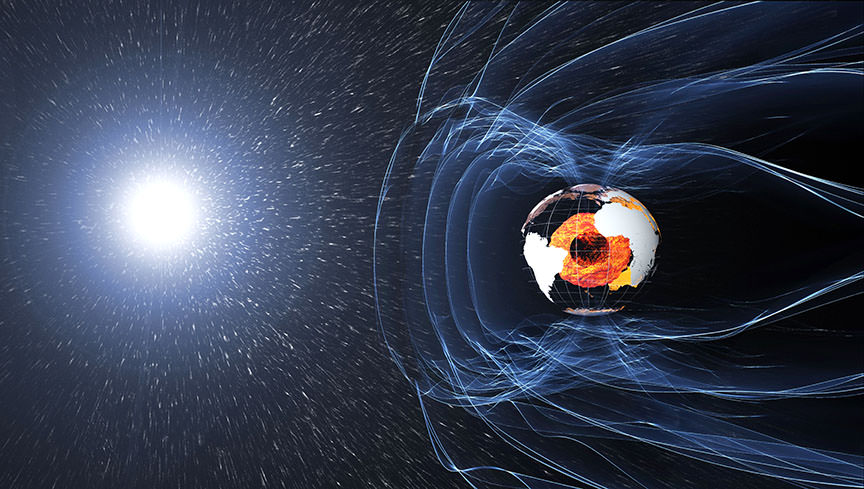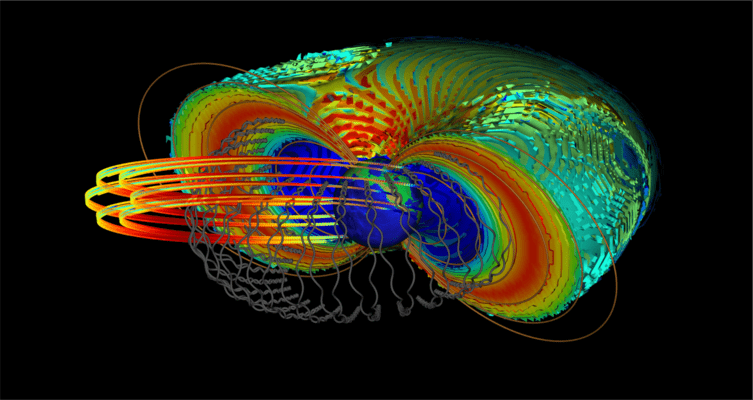Electrons Can Get Accelerated to Nearly the Speed of Light As They Interact With the Earth’s Magnetosphere
By Andy Tomaswick
Electrons serve many purposes in physics. They are used by some particle accelerators and they underpin our modern world in the silicon chips that run the world’s computers. They’re also prevalent in space, where they can occasionally be seen floating around in a plasma in the magnetospheres of planets. Now, a team from the German Research Centre for Geosciences (GFZ) lead by Drs Hayley Allison and Yuri Shprits have discovered that those electrons present in the magnetosphere can be accelerated up to relativistic speeds, and that could potentially be hazardous to our increasing orbital infrastructure.
The team ran their analysis using data from the Van Allen Probes, a pair of satellites that measured Earth’s Van Allen radiation belt, a region of energetic charged particles caused by the solar wind. These radiation belts are present on any planet with a magnetosphere, though the most commonly studied one is Earth. Though the probes were decommissioned in 2019, their data is still available for use in scientific studies. New machine learning techniques, including on used by the GFZ team, can now be brought to bear on the probes’ data as well.
One thing the Van Allen probes studied was the plasma created in the radiation belts. GFZ’s team found that electrons will only reach relativistic speeds when there are very low levels of plasma present. After observing this, the team developed a model using the low levels of plasma seen in the data and found that having such a low density of plasma creates almost ideal conditions for an electron to accelerate.
In the world of electrons, plasma can act a bit like water – a damping force that is much harder for an electron to be pushed through. Without plasma, the magnetosphere can continue to exert a force on the electron that will continue to accelerate it up to near relativistic speeds.

Credit: ESA/ATG medialab
This is important largely because of the threat such relativistic electrons can pose to satellites and other orbital infrastructure. At such high speeds, almost no shielding can stop them, and if they happen to hit some critical electronics, they could potentially cripple a system. Engineers who design systems for space know of the potential danger, and design systems such that there is no one single point of failure, whether it is struck by a relativistic electron or not. However, understanding how likely such a problem is to happen can help improve their system designs.
For now that’s the best scientists and engineers can hope to do – account for the consequences of relativistic electrons on their equipment. Though further studies from the GFZ team and others might result in other prediction or mitigation techniques. There’s still a lot of data left to analyze, thanks in no small part to non relativistic electrons.
Learn more:
GFZ : How do electrons close to Earth reach almost the speed of light?
UT: The Moon’s magnetosphere used to be twice as strong as Earth’s
ScienceDaily: How do electrons close to Earth reach almost the speed of light?
Lead Image:
Model of the radiation belts surrounding the Earth, as well as pathways for electrons to reach relativistic speeds.
Credit: Ingo Michaelis / Yuri Shprits, GFZ
The post Electrons Can Get Accelerated to Nearly the Speed of Light As They Interact With the Earth’s Magnetosphere appeared first on Universe Today.

February 6, 2021 at 06:48PM
via Universe Today read more...

Post a Comment